The Dunbar/Spring neighborhood in Tucson, Arizona has transformed excessively wide, hot, exposed streets with speeding cut-through traffic and solar oven-like, barren walkways to comparative oases with road-narrowing, traffic-calming, water-harvesting, green infrastructure and path-/road-side rain gardens growing a native food forest of sheltering multi-use plants indigenous to the Tucson Basin.
Dozens of species of native song birds and other wildlife have returned to this regenerated habitat; neighbors harvest, process, and eat wild foods grown; many more people now walk, run, or bicycle; flooding is reduced; the local aquifer is recharged; toxins from the street are bio-remediated by vegetation and other soil life; carbon is sequestered; the heat-island effect is abated; and all has become much more comfortable and beautiful.
Our hope is this will inspire more such action, change, and further evolution everywhere.
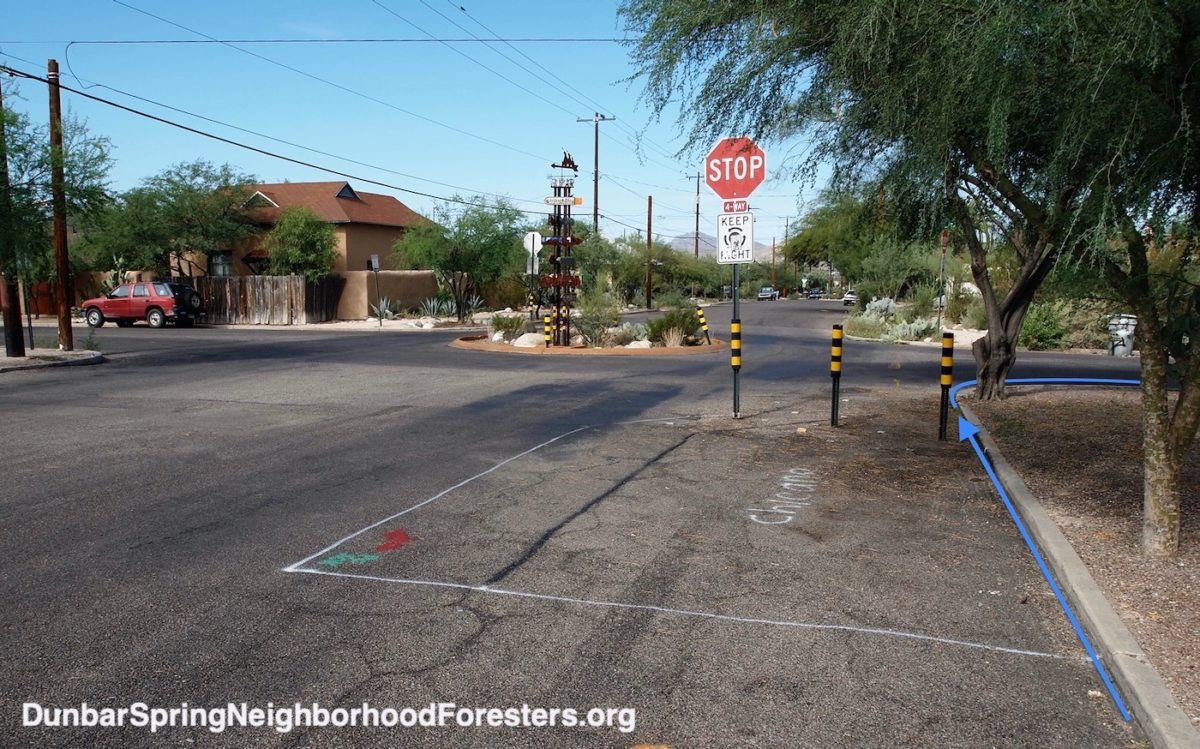
White line on street shows where asphalt will be removed, and dirt excavated, to create a water-harvesting, traffic-calming chicane.
Blue arrow denotes stormwater flow lost.
Photo: Brad Lancaster

The chicane in place and harvesting street runoff just after the installation was completed.
Stormwater harvested just after a downpour.
Photo: Brad Lancaster
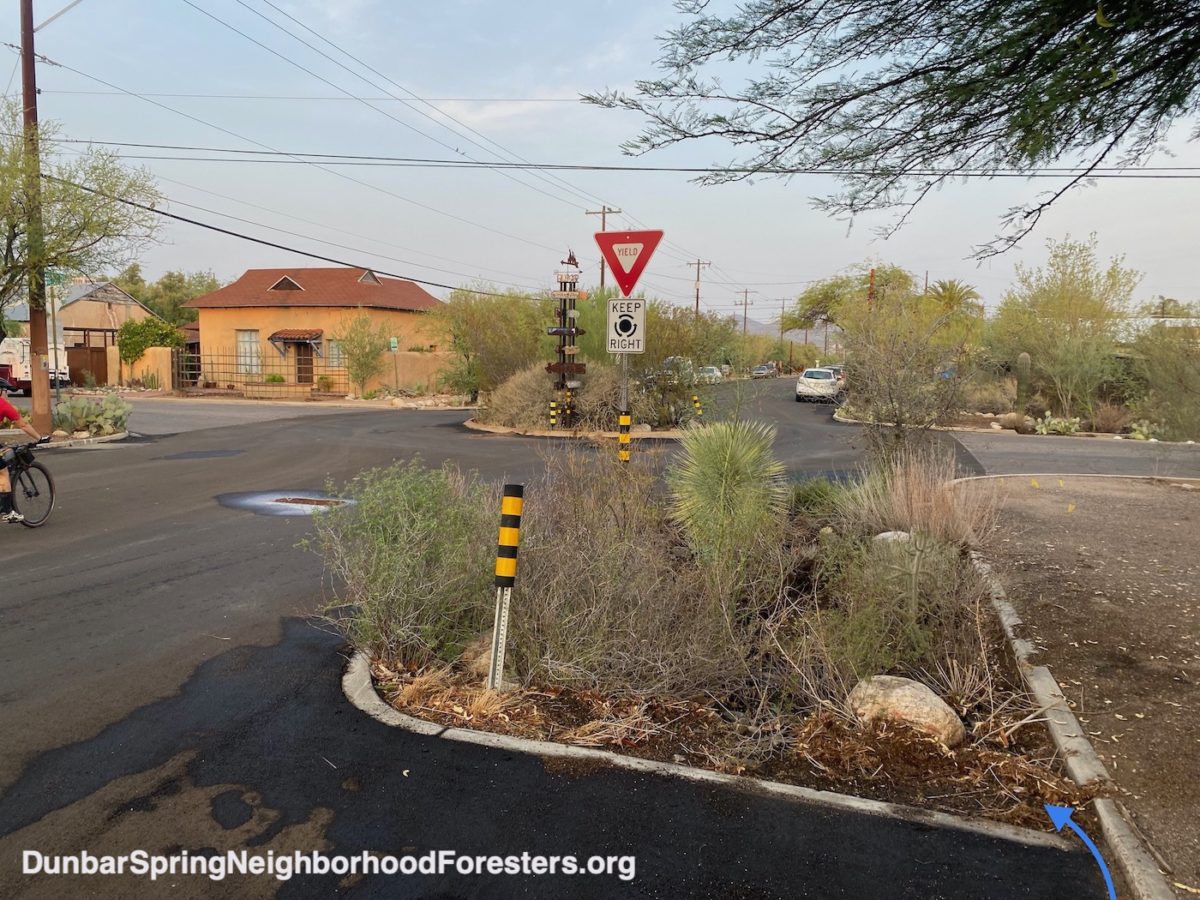
The chicane now well vegetated, this photo was taken at the end of an extreme drought in which Tucson experienced its driest year on record. Much of the native vegetation is in a natural state of drought dormancy, since the vegetation (now that it is established) receives no supplemental irrigation beyond the passively harvested stormwater.
Photo: Brad Lancaster
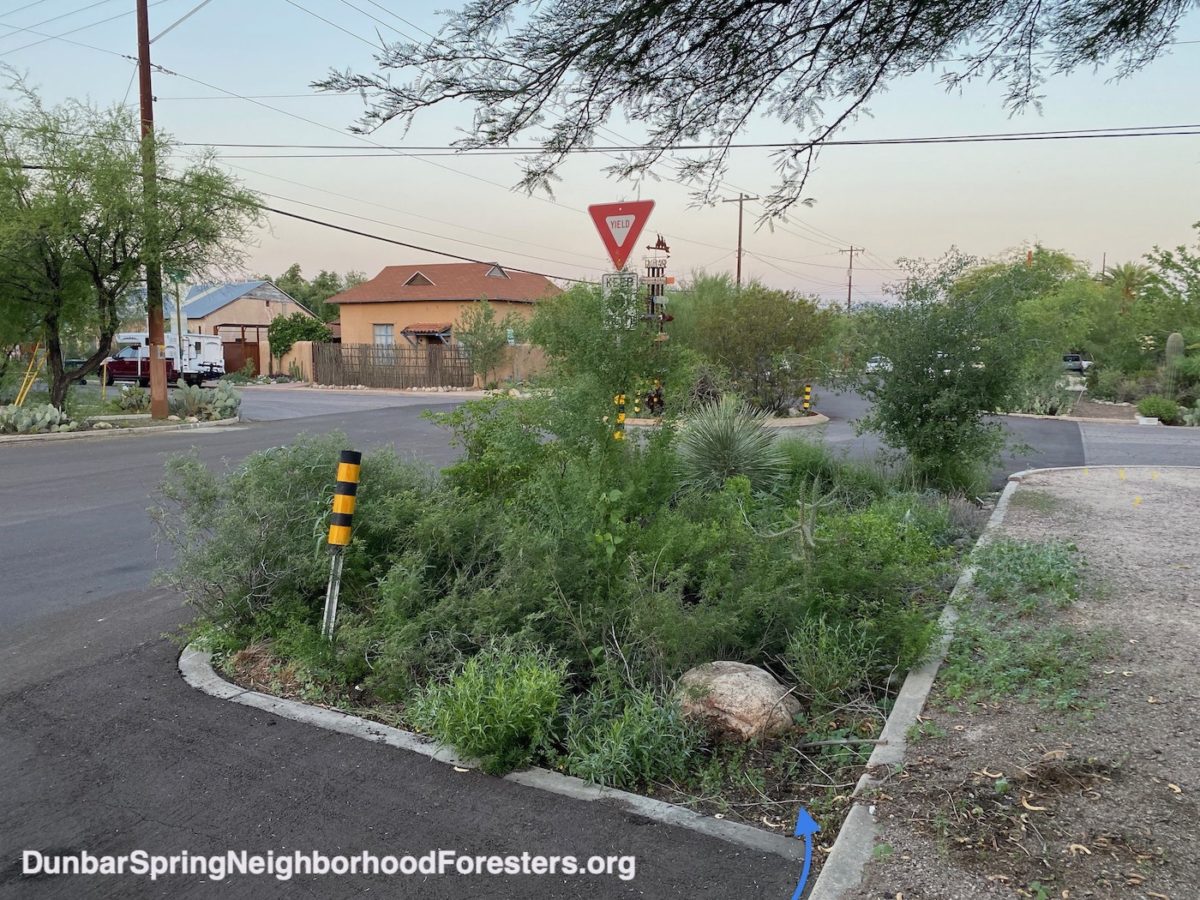
The native vegetation quickly leafs out and greens up when the rains arrive – especially within such green infrastructure where the harvest of stormwater runoff from adjoining hardscape surfaces, such as the street, increase the volume of available rainfall within the planted areas.
(Also notice how neighbor in back left (brown roof) has replaced property fence that one could not see through, with one that you can see through-thus making the public street and paths better seen, safer, and more inviting).
Photo: Brad Lancaster
These green infrastructure installations are the result of a combination of efforts:
• Some funded by a Neighborhood Reinvestment Grant from Pima County, administered by the City of Tucson, applied for by the Dunbar/Spring Neighborhood Association, supervised by neighborhood activists, and stewarded by Dunbar/Spring Neighborhood Foresters and other volunteers.
• Some funded by funds obtained by the Dunbar/Spring Neighborhood Association and City of Tucson from a developer of student housing in exchange for giving the developer control of a City alleyway between the housing complex and its parking lot. Then coordinated, planted, and stewarded by Dunbar/Spring Neighborhood Foresters and other volunteers.
• Some funded and coordinated by adjoining property owners; then built, planted, and stewarded by same property owners along with the Dunbar/Spring Neighborhood Foresters and other volunteers.
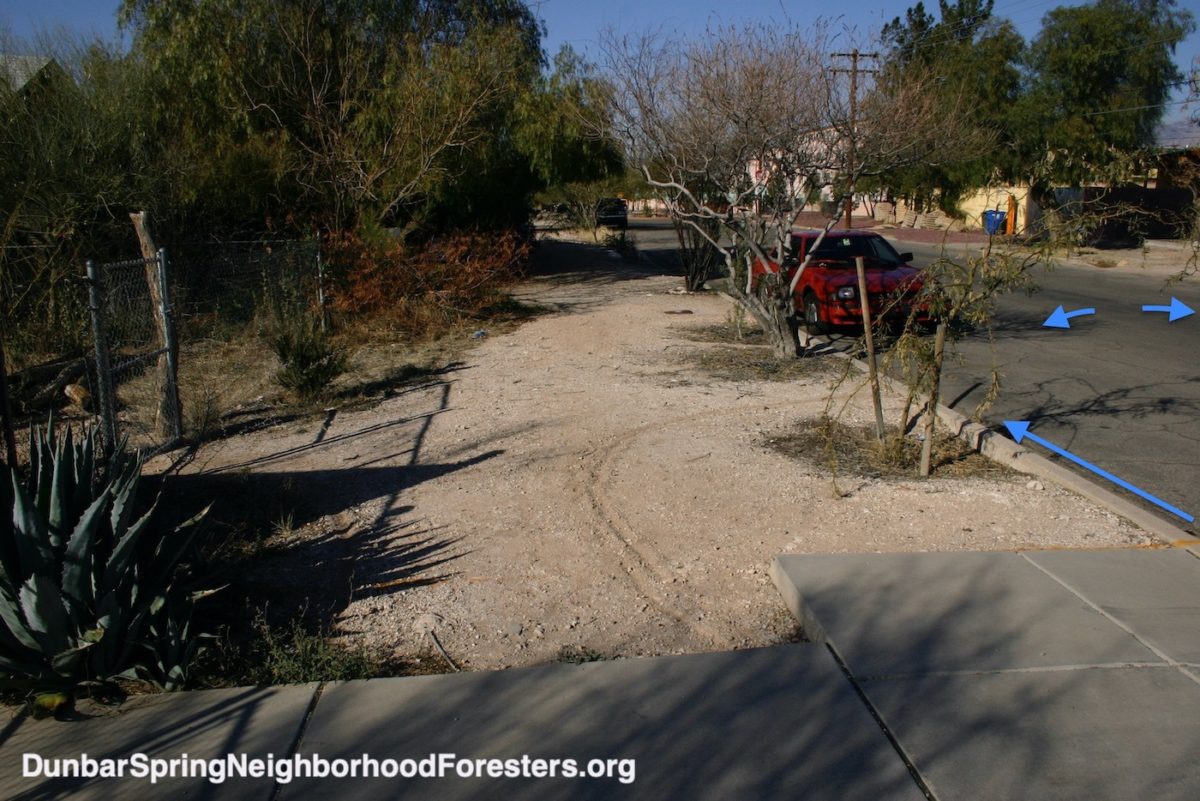
Curved line in the dirt shows what will be the edge of a street-runoff-harvesting basin, while maintaining a minimum 5-foot wide pedestrian pathway. Blue arrows denote stormwater flow.
Photo: Brad Lancaster
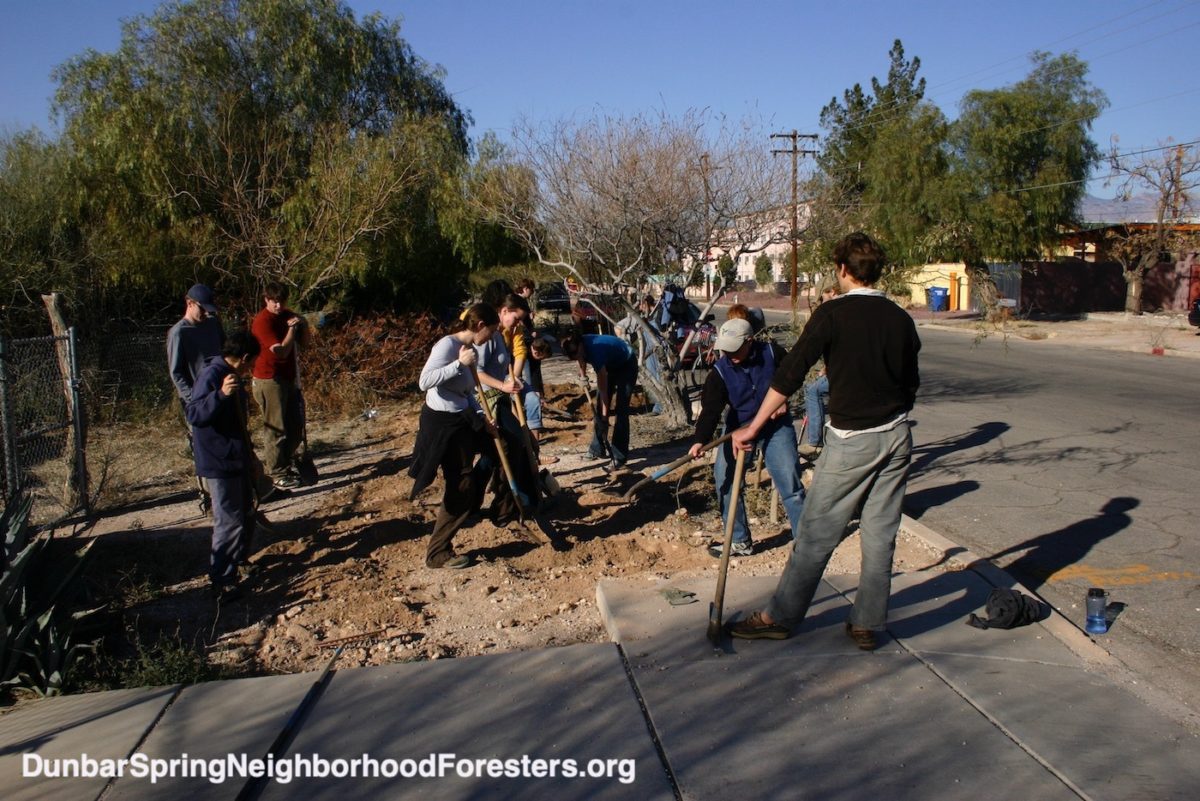
Brad Lancaster coordinated this crew of students from Audubon Expedition Institute
Photo: Brad Lancaster
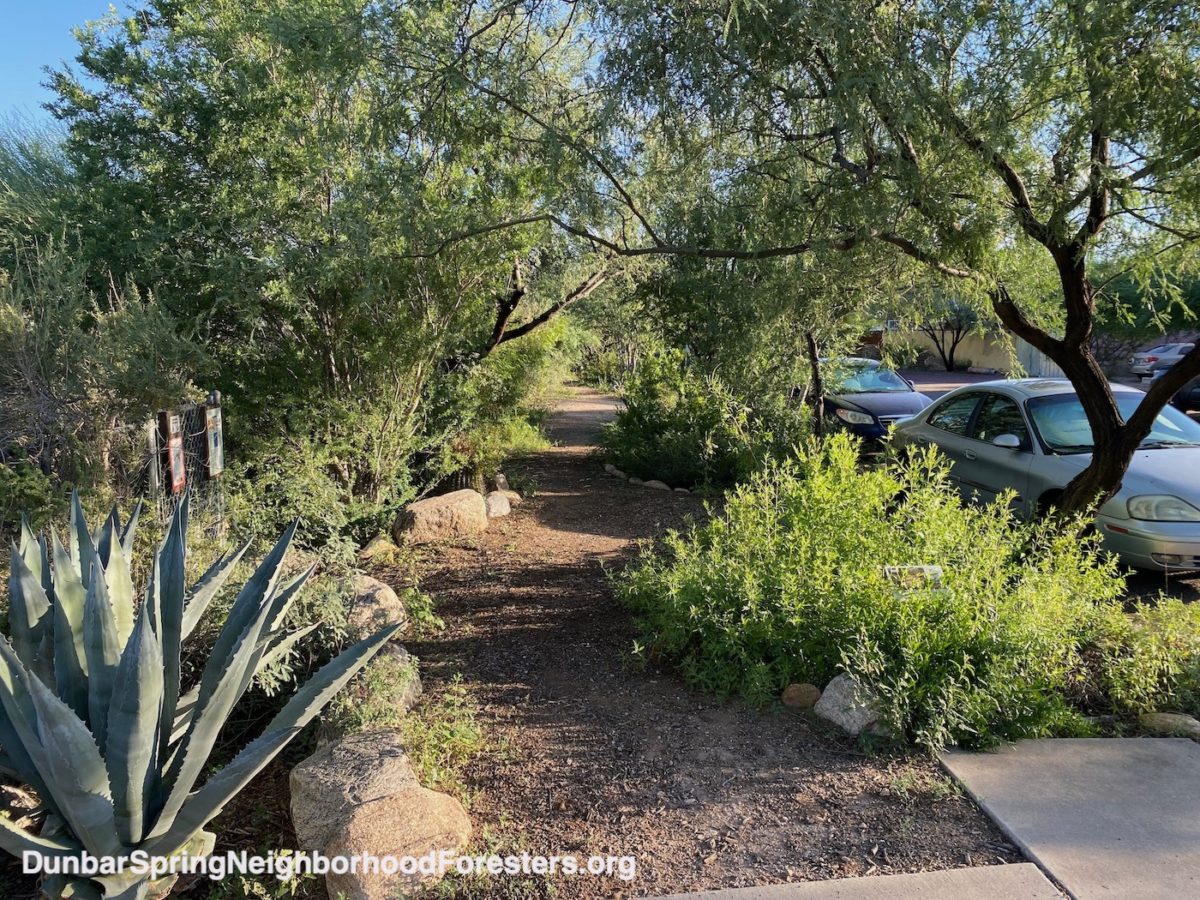
Photo: Brad Lancaster
The native vegetation in this green infrastructure was watered the first 1 to 3 years after planting to get its root system growing and established. Then supplemental irrigation was ceased and all is irrigated for free with the passively harvested stormwater.
(Though if new plantings are planted, they too will typically be supplementally irrigated the first 1 to years to get them established).
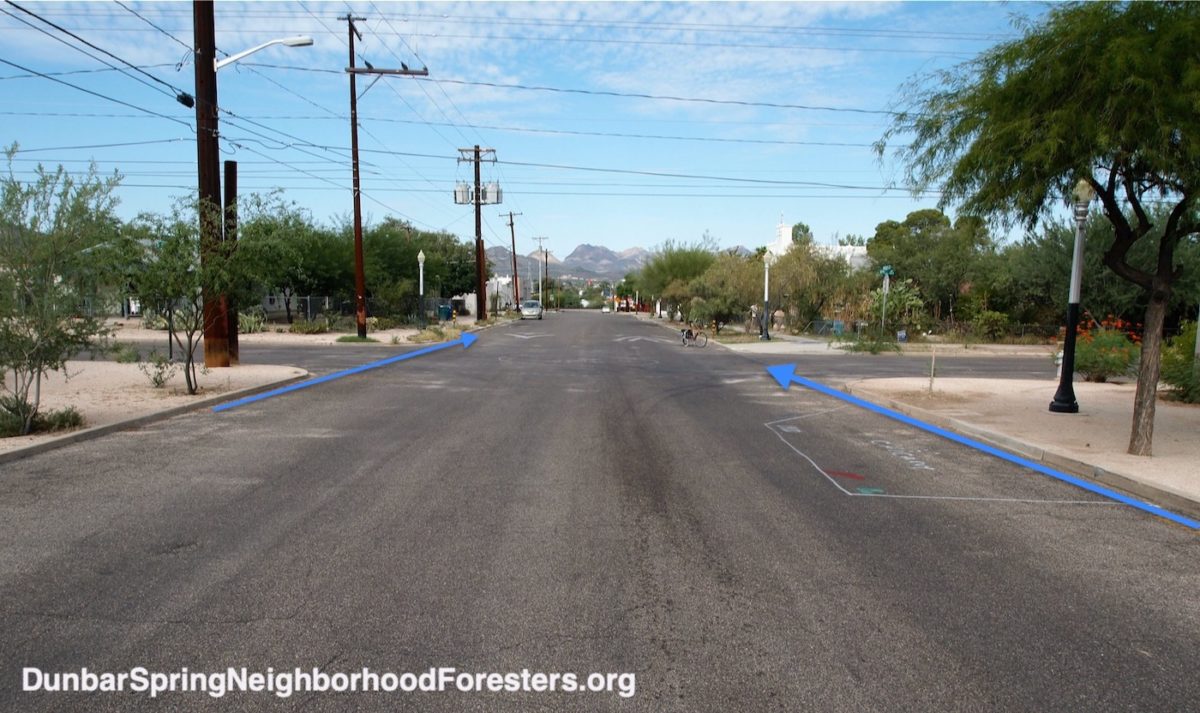
Blue arrows denote stormwater flow lost.
Photo: Brad Lancaster
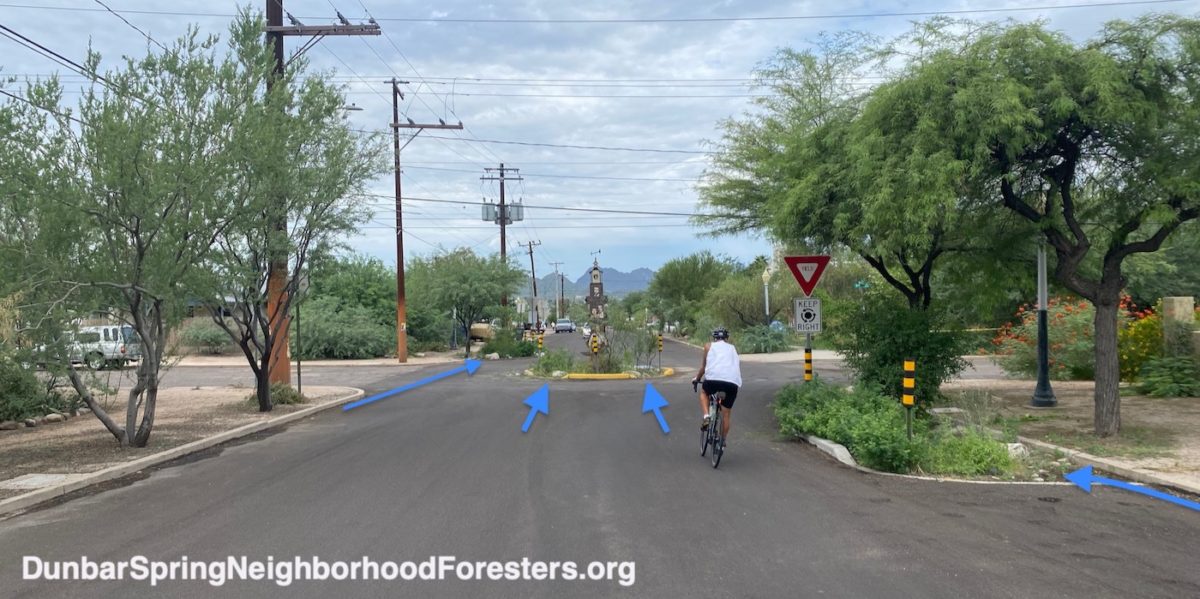
Blue arrows denote stormwater flow captured.
Photo: Brad Lancaster
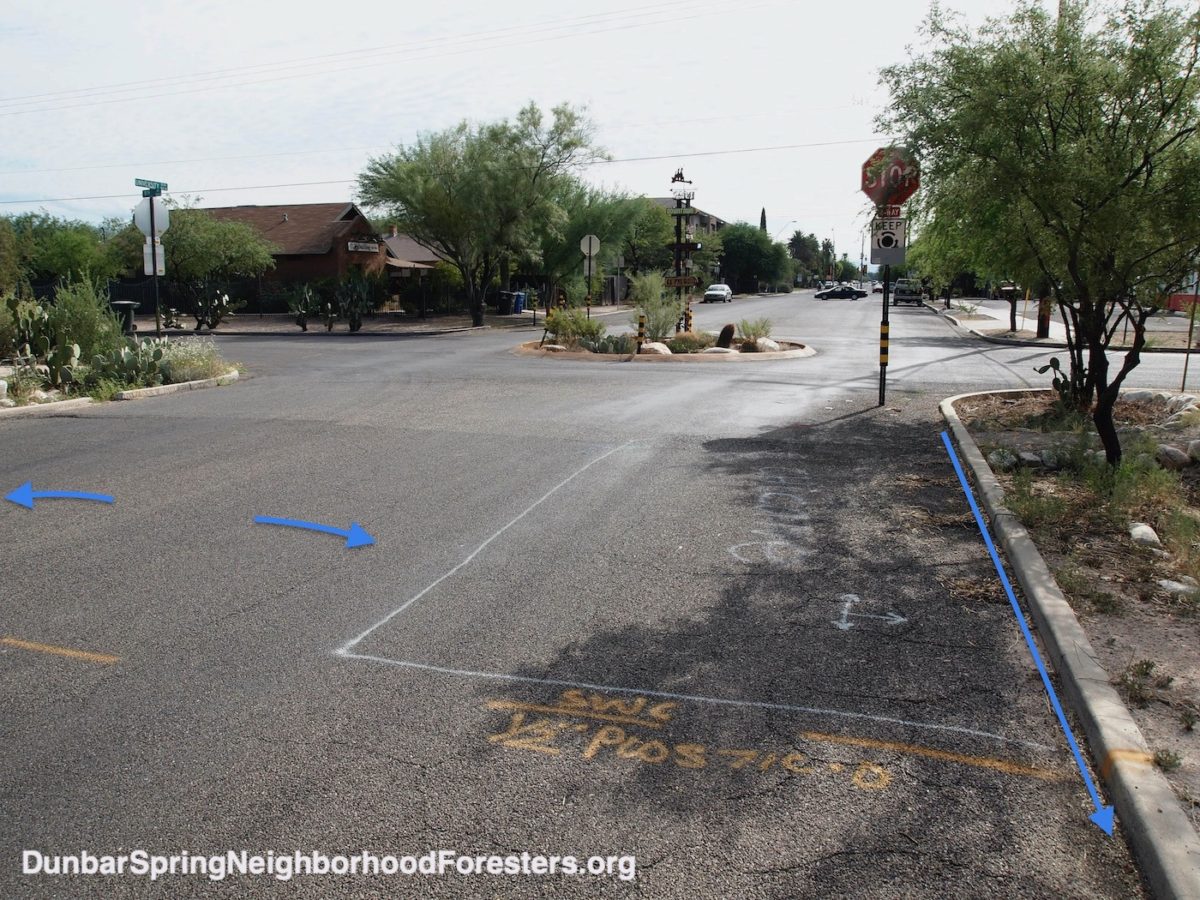
Yellow spray paint on street marks underground gas line that will be avoided.
Call 811 before you dig for a free service that marks underground utility lines.
Photo: Brad Lancaster

Stop sign replaced with yield sign so bicyclists don’t have to stop at intersection, while traffic circle slows cars.
Photo: Brad Lancaster
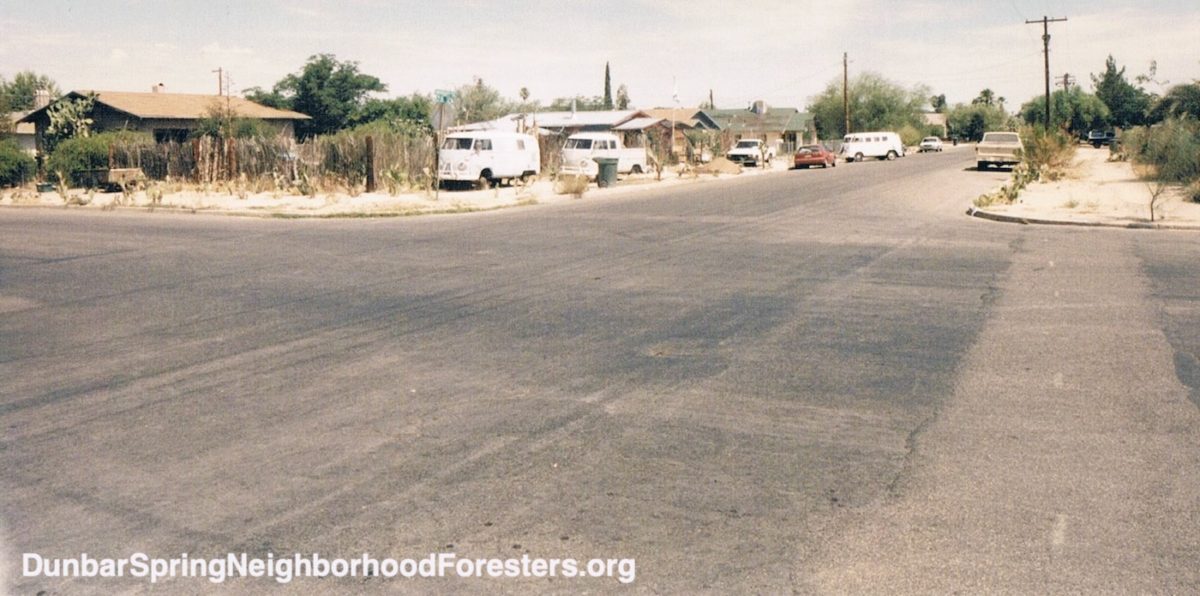
Note how many cars are not parked on the street; but are instead parked on, and block public walk way.
Photo: Brad Lancaster
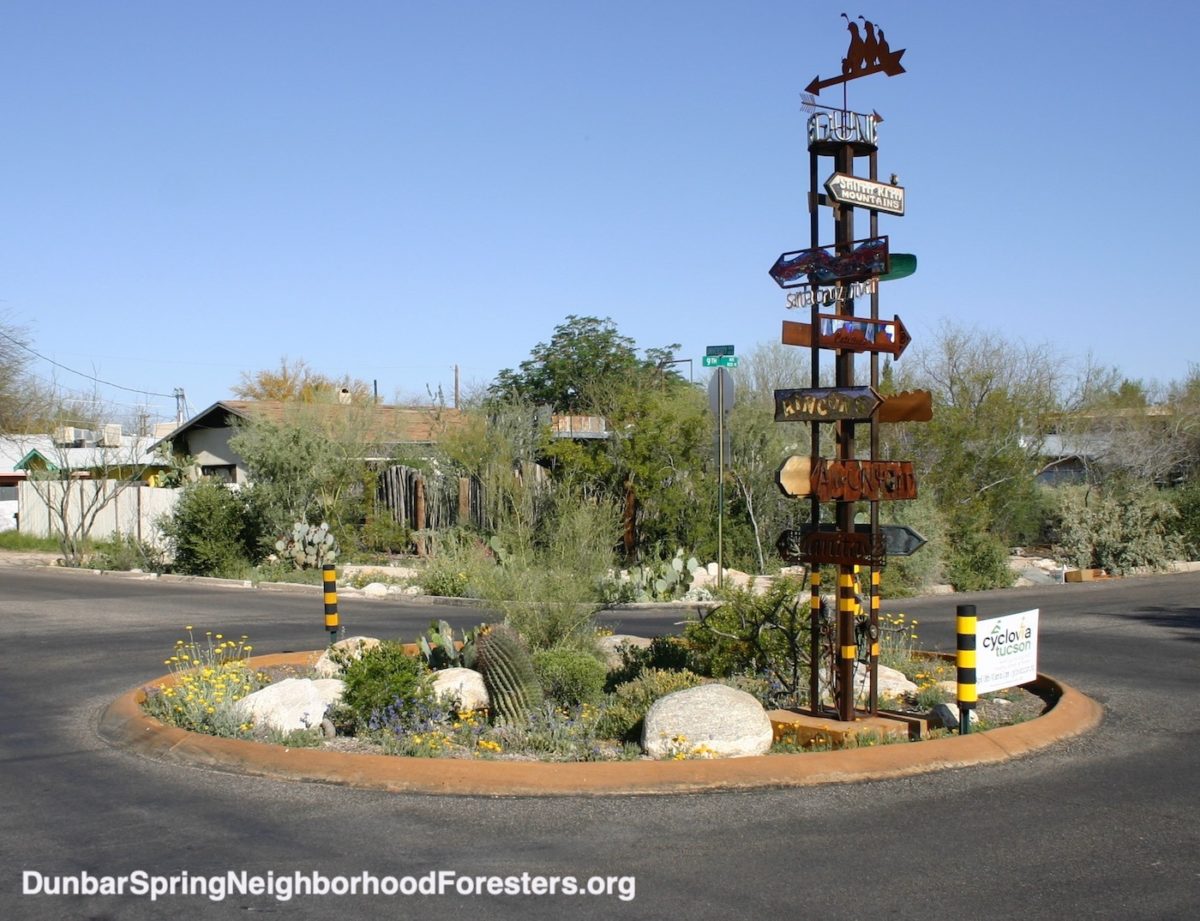
Native wildflower seed is sowed by Dunbar Spring Neighborhood Foresters volunteers at the beginning of rainy seasons. Perennial plants also planted by neighborhood volunteers – thereby building community and further connecting neighbors to this place and each other.
Each section of the crossroad sign was made by neighborhood artists, or neighboring neighborhood artists – thereby building still more community and connecting more people to this place and each other.
Photo: Brad Lancaster
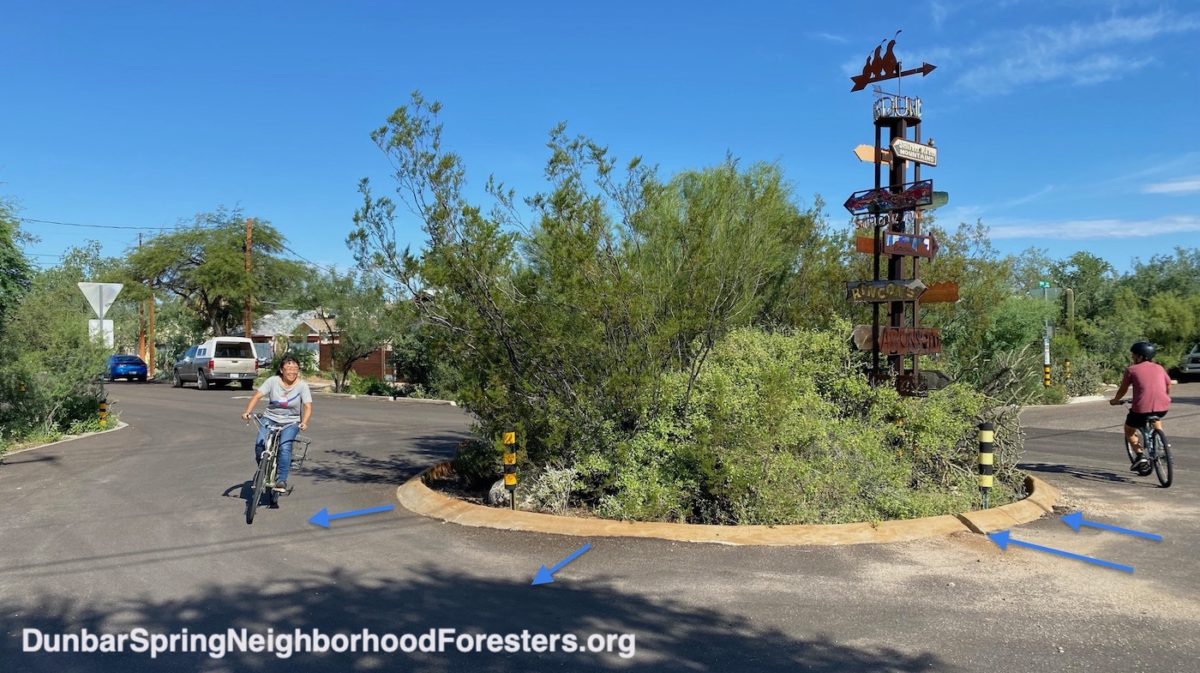
Although the round-a-bout is on raised crown of road, some water flows along the ridge line of the crown to the circle-thus curb was cut to capture that water for circle plantings.
The Gambel’s quail weather vane at the top of the cross roads sign is a call to the neighborhood to plant more native vegetation (such as is planted within the traffic circle) as such vegetation grows the habitat that supports the return of such native birds to our neighborhood.
Water-harvesting tree basins in the public right-of-way (between property lines and street edge) help divert parked cars back to the side of the street, while shading/sheltering the parked cars and public pedestrian paths.
Photo: Brad Lancaster
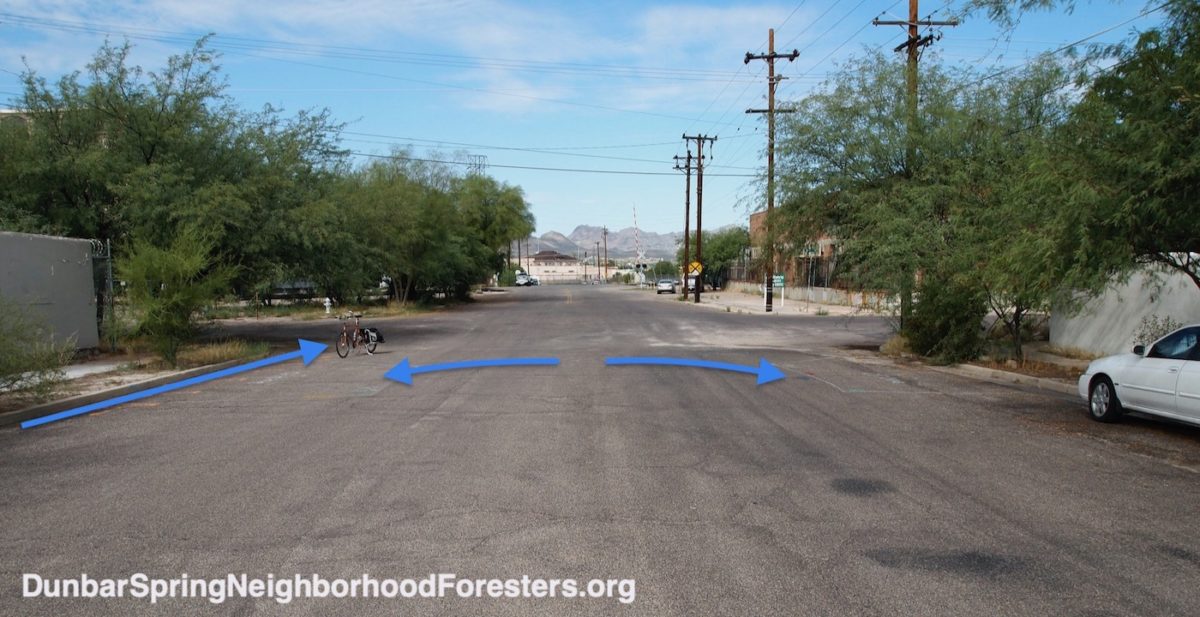
Photo: Brad Lancaster
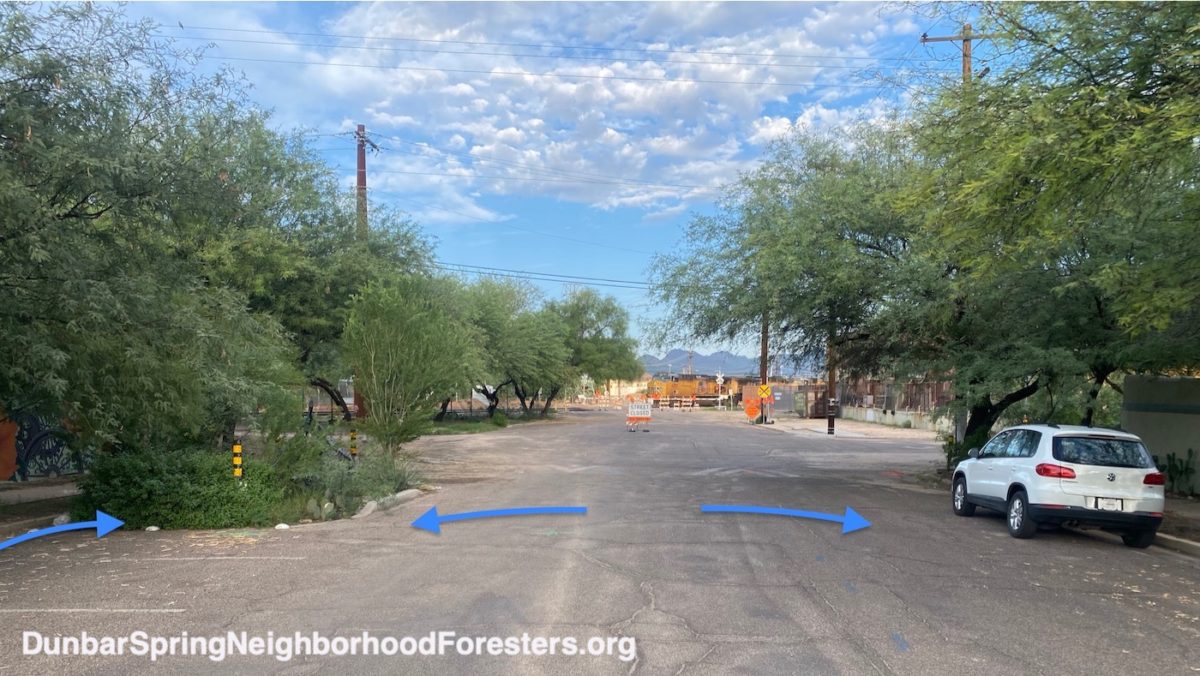
Note that the speed hump could’ve used less asphalt and been more effective if it were placed against the raised curb of the chicane, rather than downstream of the chicane.
Within the chicane you’ll find the sculpture below.
Photo: Brad Lancaster
The Dunbar/Spring neighborhood chose to spend the half million dollar Neighborhood Reinvestiment grant it received from Pima County for four things:
Water harvesting
Tree planting
Traffic calming
Public art (made by local artists)
But instead of doing these things separately, they were integrated—for much greater effectiveness. So the water harvesting doubles as traffic calming, and the water harvesting freely waters the trees while also capturing and germinating more tree seed. The public art further tells the story of many of these efforts, and also calms traffic as those driving by slow down to see. Work funded by the grant was initiated in 2009 and completed by 2012.
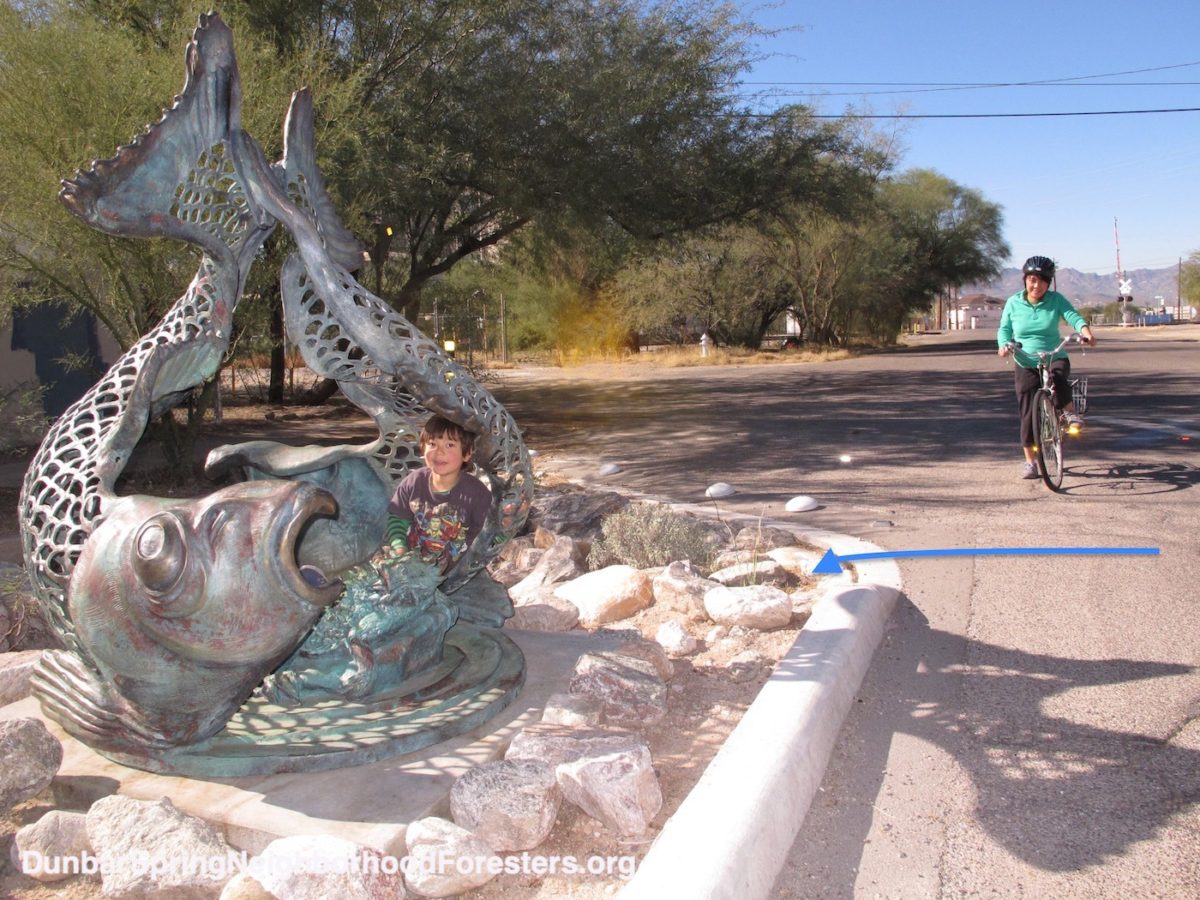
Photo: Brad Lancaster

Desert ironwood trees within the chicane were planted by seed by Dunbar Spring Neighborhood Forester volunteers at the beginning of the summer rainy season 5 years before this photo was taken.
Photo: Brad Lancaster
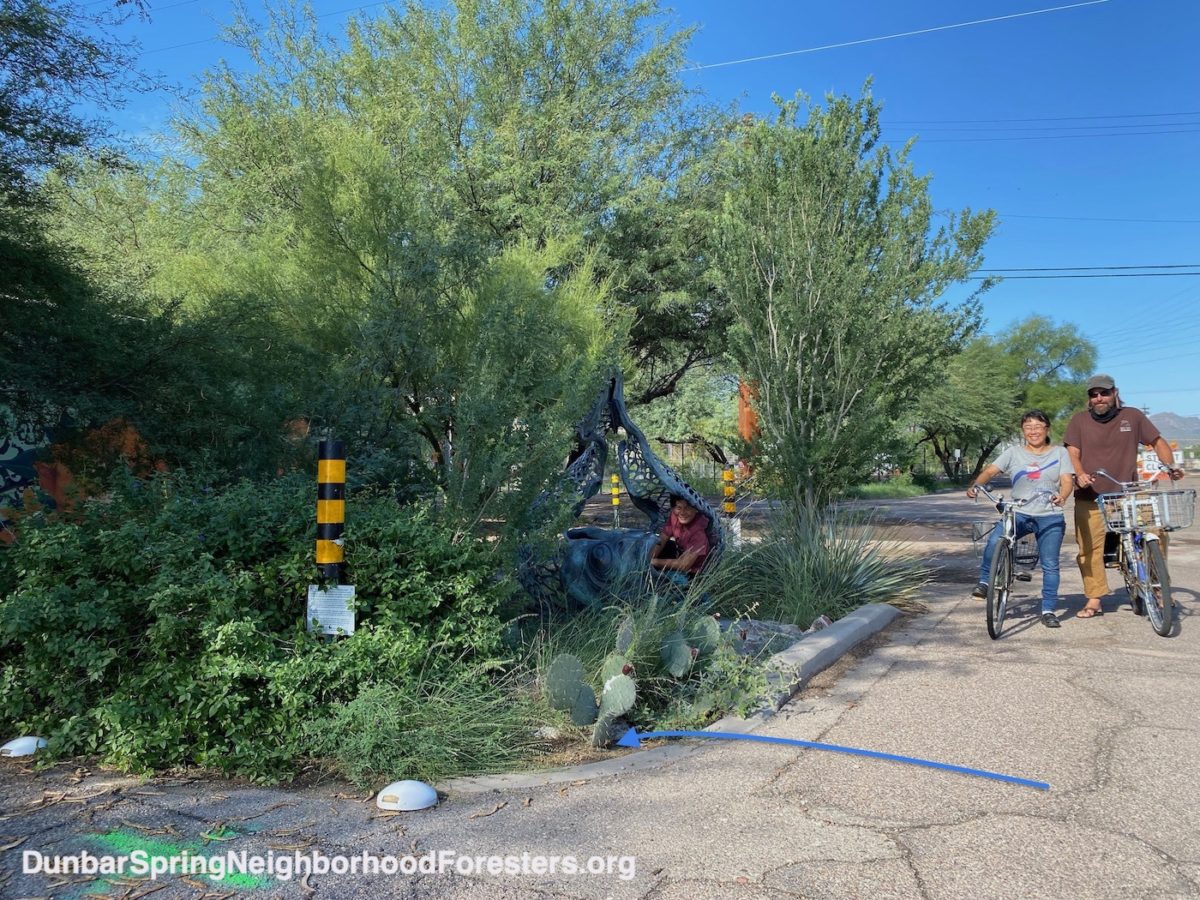
Photo: Brad Lancaster
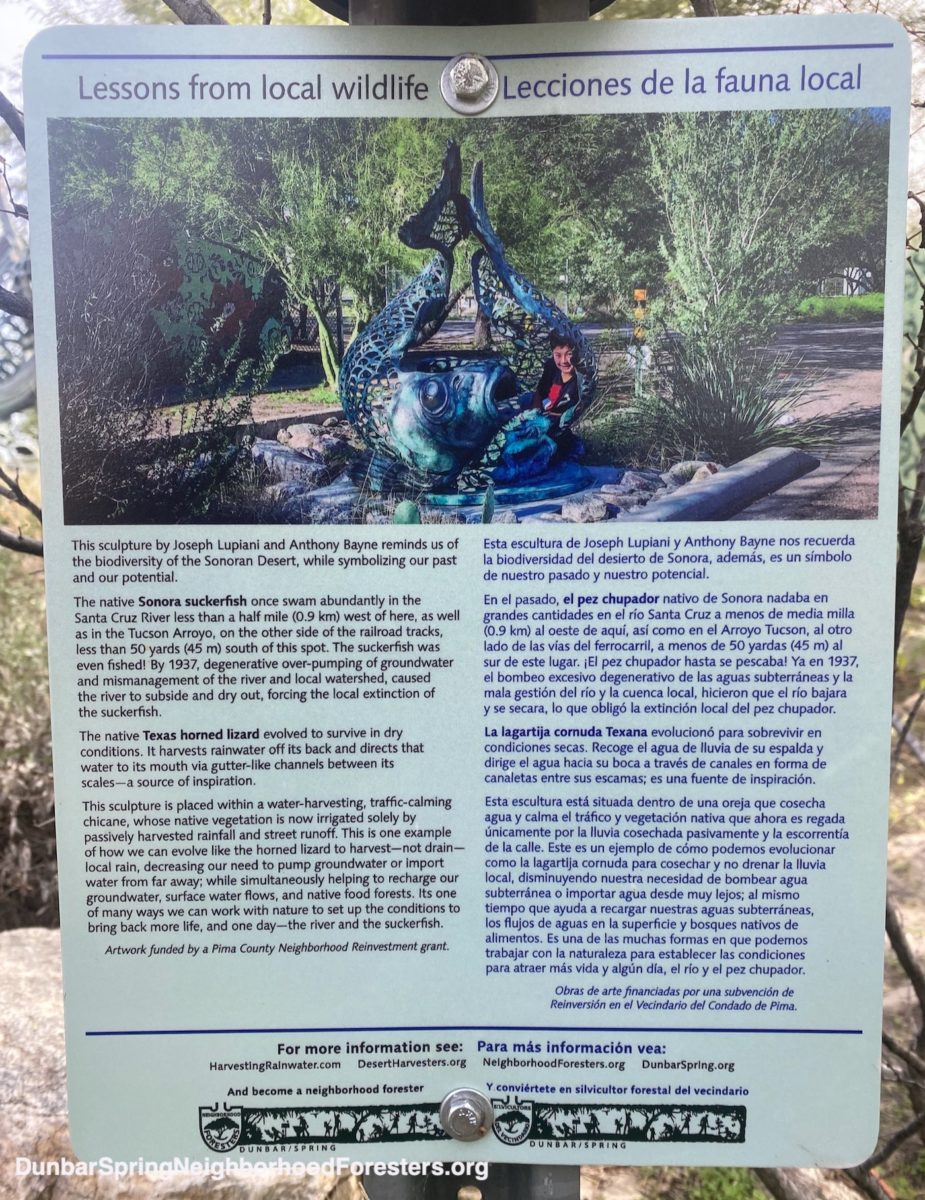
Photo: Brad Lancaster
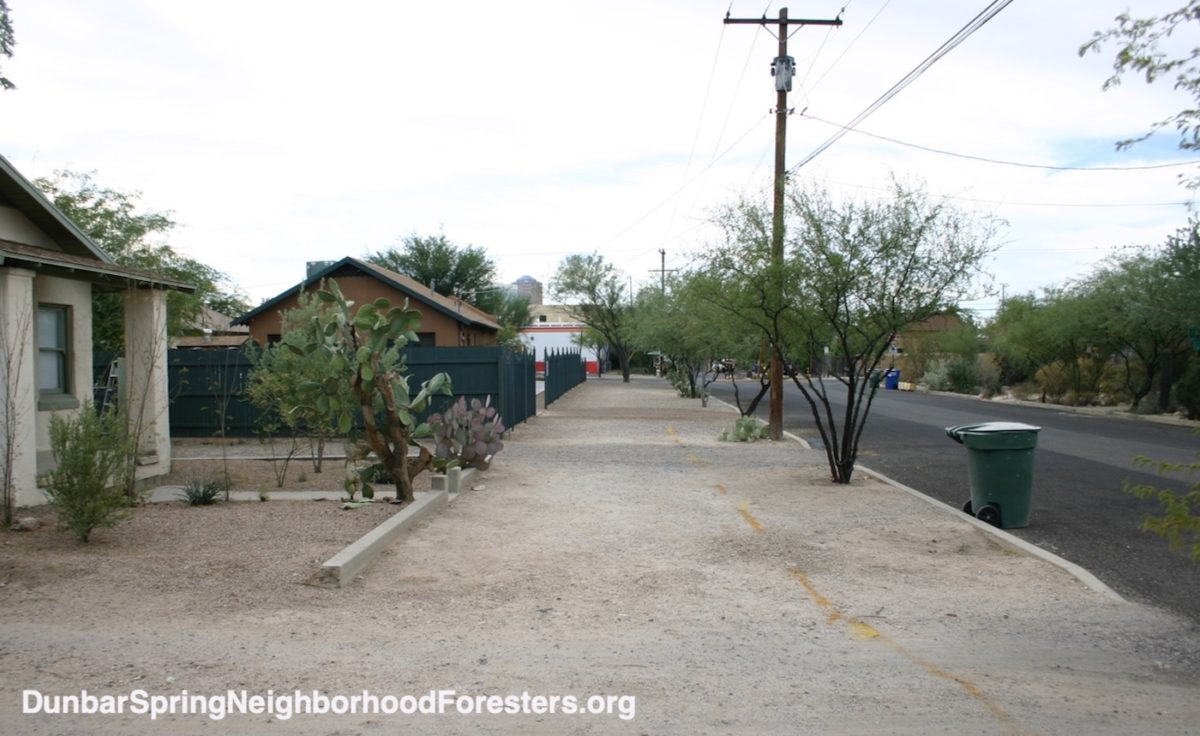
Yellow paint in dirt walkway marks underground gas line – mark all underground utilities before you dig by calling 811 for this free service.
Photo: Brad Lancaster
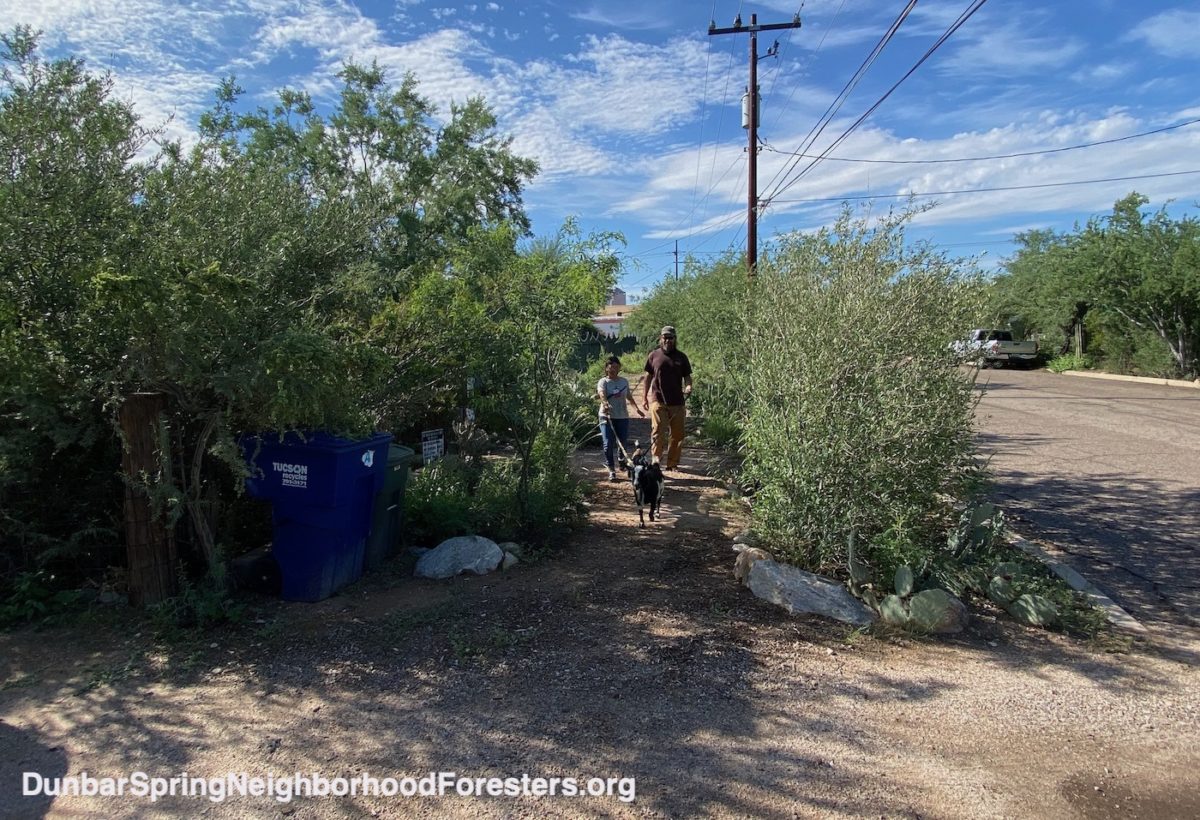
Abundant vegetation in the front yard is also freely, passively irrigated by the stormwater-harvesting rain gardens in the public right-of-way as the plants’ root zone extends to three times their above-ground canopy.
Gas line is under the pathway, not under rain garden and its plantings.
Photo: Brad Lancaster
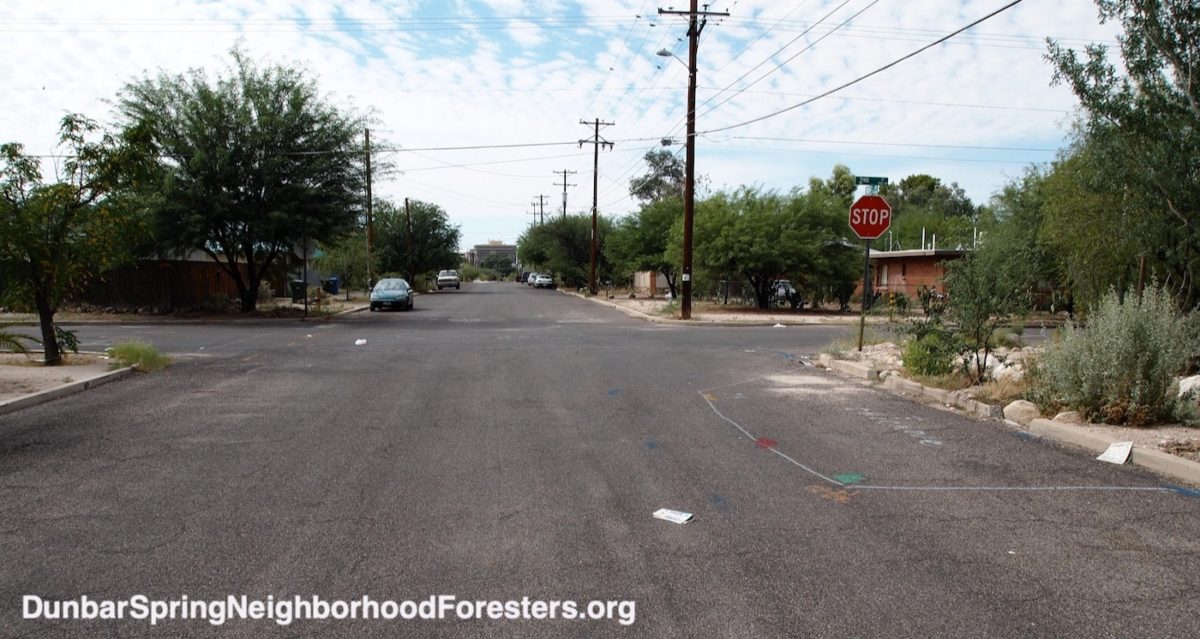
Photo: Brad Lancaster

Photo: Brad Lancaster

Photo: Brad Lancaster
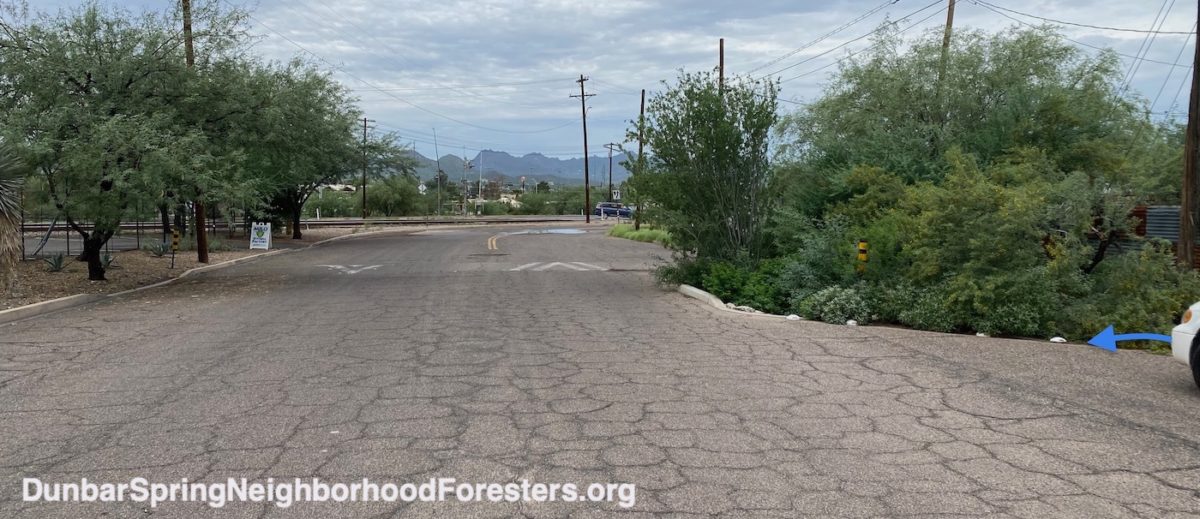
Note that the speed hump could’ve used less asphalt and been more effective if it were placed against the raised curb of the chicane, rather than downstream of the chicane.
Such chicanes also protect cars parked on street, since the chicanes divert drivers to the driving lane so they won’t drive along the parking lane against the curb.
Photo: Brad Lancaster
For more info and to help create and steward more such efforts:
• Become a Neighborhood Forester or start a Neighborhood Forester group in your neighborhood
• If in Tucson, Arizona sign up to our Neighborhood Forester contact list
• Come see these installations for yourself. Start at the intersection of 9th Avenue and University Blvd as there are many information signs and installations within a half-block radius.
• Check out the full-color editions of the books Rainwater Harvesting for Drylands and Beyond by Brad Lancaster that give you lots of info on how to design, implement, and steward these systems.

